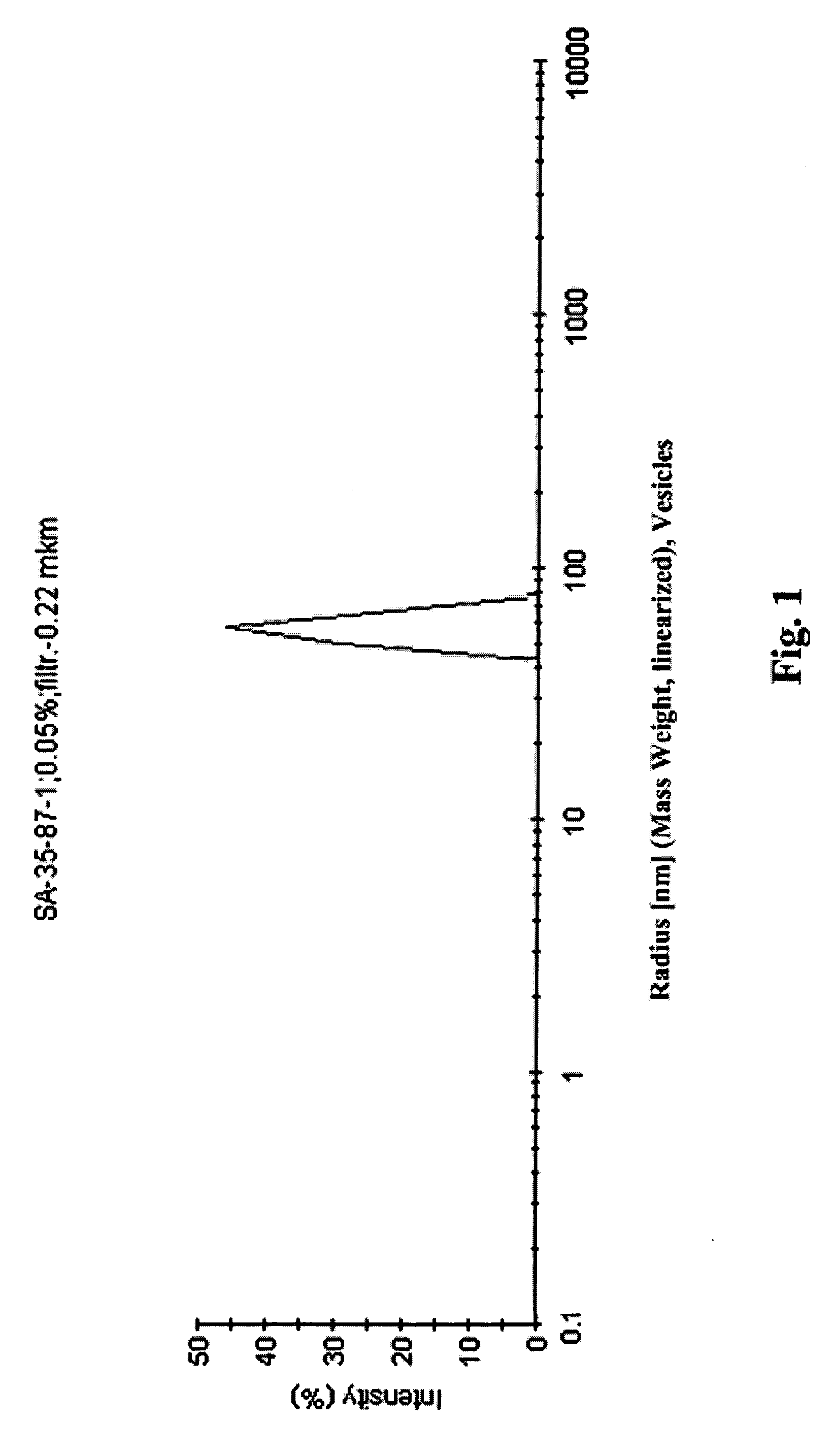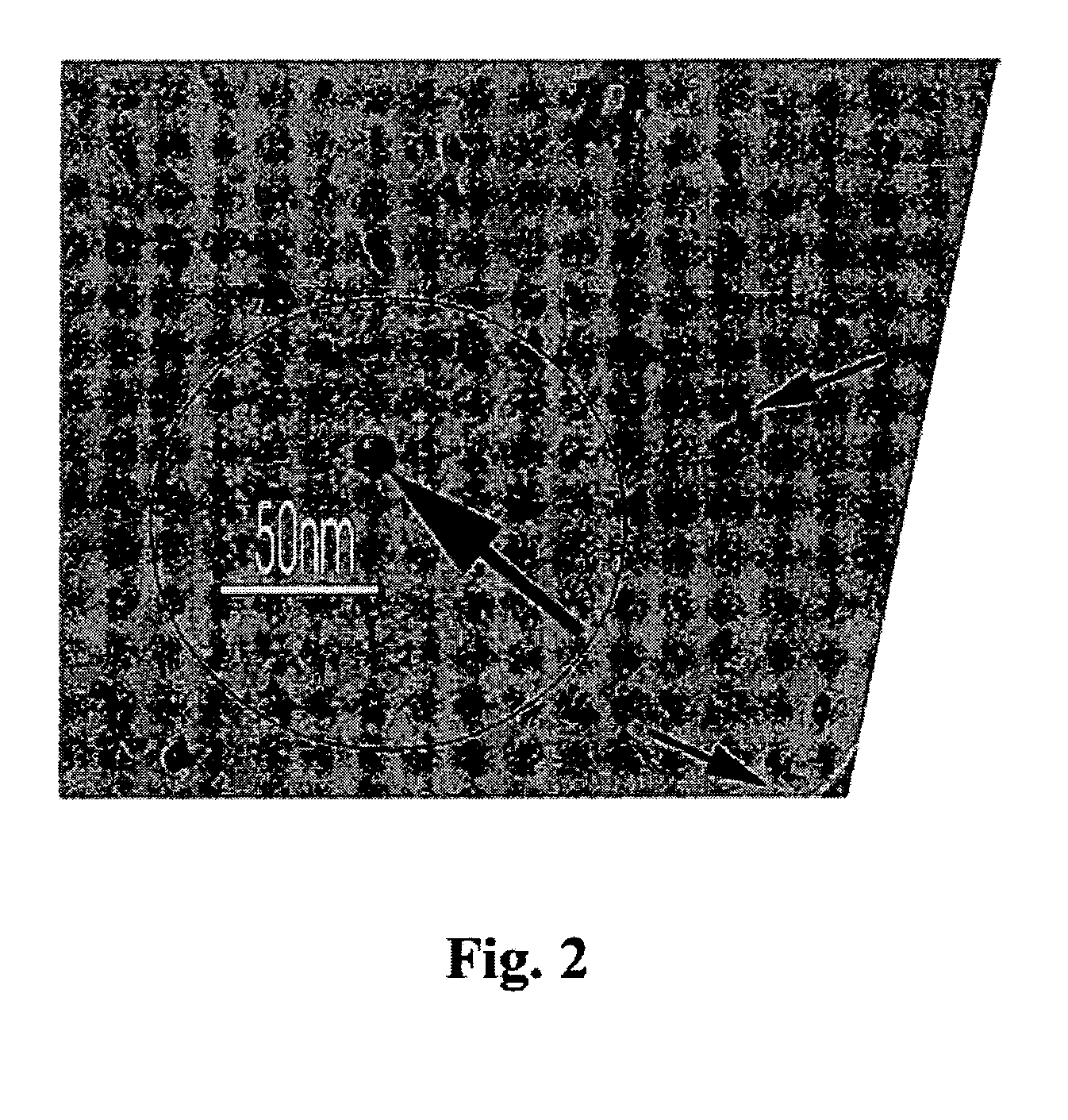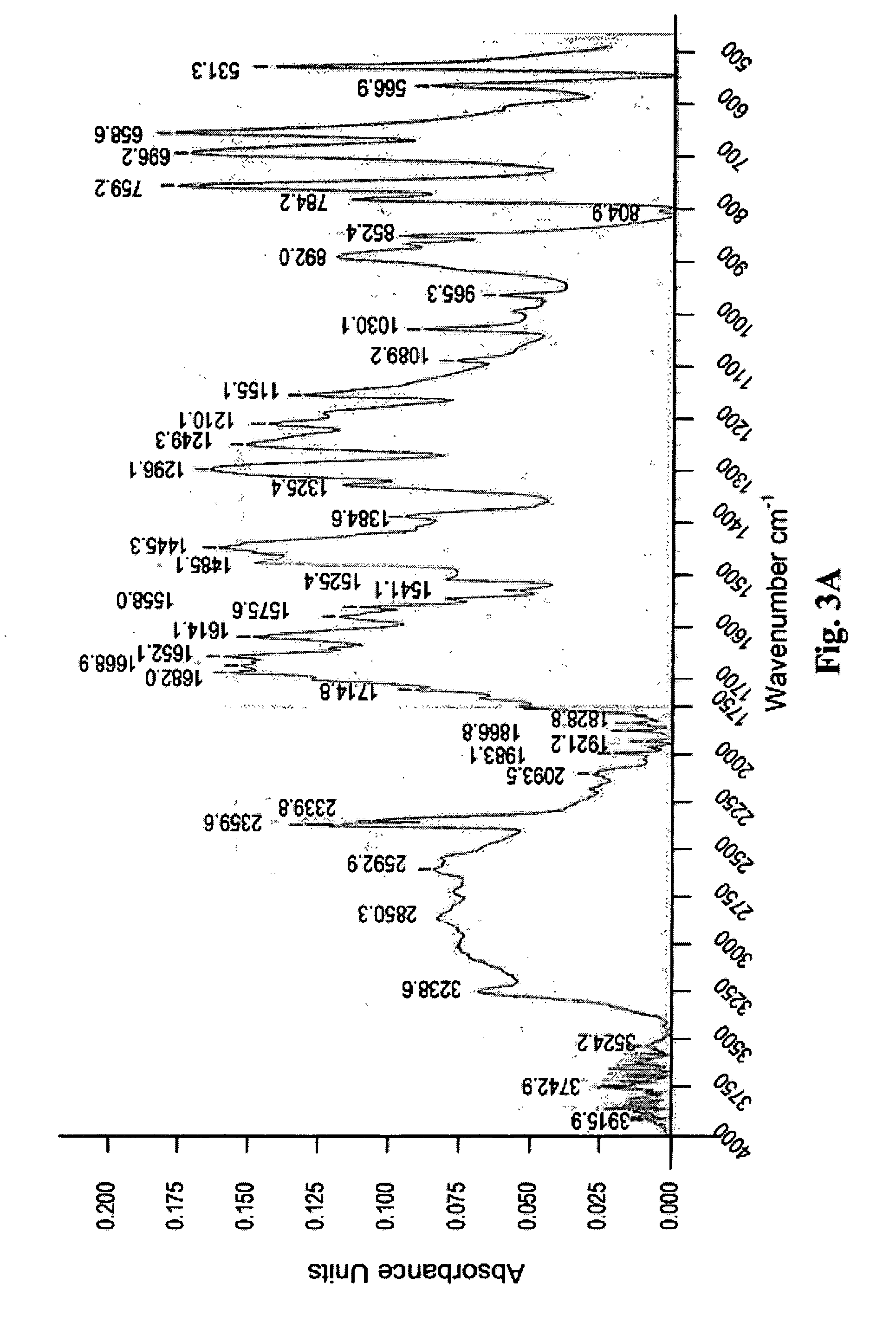Hydrophilic dispersions of nanoparticles of inclusion complexes of salicylic acid
- Summary
- Abstract
- Description
- Claims
- Application Information
AI Technical Summary
Benefits of technology
Problems solved by technology
Method used
Image
Examples
example 1
Preparation of Urea-Modified Polyacrylamide (PAA)
[0076] Various conditions were used for preparing the polymer solutions of polyacrylamide (PAA) and urea-modified-PAA, as shown in Table 1. The unmodified PAA was used in some experiments but did not provide good results.
[0077] Specifically, 3.3 (or 1) grams of PAA (CAS Number 9003058; Acros Organic, N.J., USA) were dissolved per liter water by thorough stirring, while heating at 60-90° C. (preferably 80-90° C.) for 80-120 min. Then, 2.1-4 grams of urea were dissolved per liter of the resulting solution by thorough stirring. The mixture was heated to above 100° C. (110-125° C.) under pressure (up to 2 atm) in an autoclave for about 80 minutes, in order to complete the reaction between the polymer and the urea. The resulting pH and viscosity of this and the other solutions prepared by variations on this process were measured and are presented in Table 1. The solution was cooled to room temperature before proceeding to the step in whi...
example 2
Preparation of Dispersions Comprising Nanoparticles of Inclusion Complexes of Salicylic Acid Wrapped in Urea-Modified Polyacrylamide via the Organic Solvent Process
[0078] In this method, the urea modified-PAA polymer solution in water is prepared as described in Example 1 and salicylic acid dissolved in an organic solvent is added to the solution, followed by autoclaving.
[0079] The conditions used to prepare dispersions comprising nanoparticles of inclusion complexes of salicylic acid with urea-modified PAA polymers using the organic solvent process are presented in Table 2. In specific experiments, 150-250 ml of the solution prepared in Example 1 were transferred to a reaction flask having three openings, one attached to a condenser, a second for insertion of a homogenizer (for stirring), and a third for solvent addition. Salicylic acid (17.5 grams) was dissolved in approximately 200 ml methyl acetate (MA) and was transferred to an apparatus suitable for dropwise addition into th...
example 3
Two-Step Organic Solvent-Free Process for Preparation of Dispersions Comprising Nanoparticles of Inclusion Complexes of Salicylic Acid Wrapped in Urea-Modified Polyacrylamide
[0080] In the two-step process, a solution of PAA and urea in water is prepared as described in Example 1 and autoclaved for about 80 min, and salicylic acid powder is added to the modified polymer solution and autoclaved for about 130-180 min.
[0081] The modified polyacrylamide polymer was obtained by reaction of 0.33% or 0.2% PAA with 3% or 2.2% urea. After autoclave, 7.0 grams salicylic acid powder were added for each 100 ml of polymer solution, and the mixture was autoclaved (113-115° C.; 1.50-1.65 atm) for about 130-180 min. The combination of heat and pressure was essential for the solvent-free process, since otherwise significant amounts of crystalline salicylic acid precipitate. Under these conditions, the use of PAA unmodified by urea and of certain polymers such as chitosan or polyvinyl alcohol (PVA) ...
PUM
| Property | Measurement | Unit |
|---|---|---|
| Temperature | aaaaa | aaaaa |
| Nanoscale particle size | aaaaa | aaaaa |
| Volume | aaaaa | aaaaa |
Abstract
Description
Claims
Application Information
 Login to View More
Login to View More - R&D
- Intellectual Property
- Life Sciences
- Materials
- Tech Scout
- Unparalleled Data Quality
- Higher Quality Content
- 60% Fewer Hallucinations
Browse by: Latest US Patents, China's latest patents, Technical Efficacy Thesaurus, Application Domain, Technology Topic, Popular Technical Reports.
© 2025 PatSnap. All rights reserved.Legal|Privacy policy|Modern Slavery Act Transparency Statement|Sitemap|About US| Contact US: help@patsnap.com



